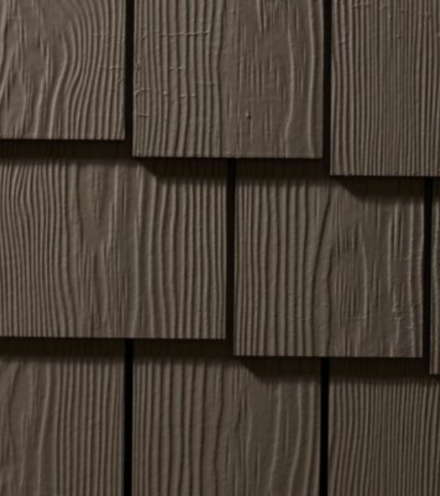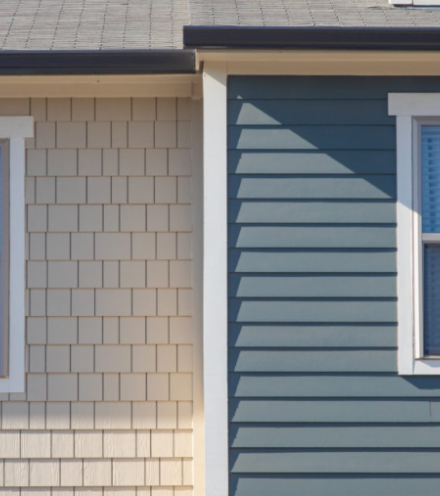Board and batten siding is one of the oldest styles of cladding in the United States. It was first created when sawmills became regular and accessible additions to many communities. Wood was milled into long boards that could be installed vertically over the home from top to bottom. To help make the siding air and weather-tight, thin strips of wood called battens were installed over the seams.
Some older board and batten homes may have had irregular spacing, as the milled boards may not have been as uniformly cut as what is available today. Over time, board and batten has developed more of a regular appearance.
It’s important to get the spacing of the boards, the size of the boards, and the battens correct for the installation to go well.
Stud Spacing

The most crucial part of any board and batten installation is making sure that the “boards” are installed correctly, which means hitting the studs behind the wall to ensure a secure installation. Traditionally, board and batten was made of wood involved installing milled boards, which were often sized so that it was difficult to hit a stud. Fortunately, today’s installations are a little easier.
Allura’s fiber cement vertical panels come in 4-foot widths, making nailing them directly to the studs an easy process. Studs are usually located every 16-inches or every 24-inches, depending on your home and frame. Position the boards so that they cover 48-inches at a time, and nail either 16 on center or 24 on center to ensure a secure and successful installation.
Batten Sizes

Battens were originally thin strips of wood that were just large enough to fasten over the gaps between the milled boards, helping to stop air and moisture from infiltrating the siding. Today, they’re more decorative than functional, but it’s still important to get their sizing right.
A true batten is 2-inches in width or smaller, but you can use larger widths by installing trim in place of a batten if you want a thicker appearance. They’re installed directly over the vertical panels to get the traditional look.
You can match any of Allura’s vertical panels with their trim - 2-inch, 4/4-inch, or 5/4-inch. Each is sold in 12-foot lengths.
Batten Spacing

Traditional batten spacing was dictated by the width of the boards being used. If the boards were 12-inches wide, then that was the batten spacing. If the boards were 8-inches wide, then the battens were installed 8 inches apart.
The closer together you space the battens, the more dimensional and textured the installation becomes. The further apart you space them, the more subtle the look.
Vertical panels from Allura come in smooth and wood grain styles, with a variety of widths. Since our battens need to be installed with a 1” embedment, installation professionals need to be able to hit a stud. Stud spacing will be the primary indicator for determining the width of your board and batten spacing. If you prefer a wider look, opt for a plain wood-grained panel or a smooth panel, and you can move the battens out further, just be sure to plan them out in relation to your stud spacing.
Keep in mind that the spacing refers to the center line of each batten; wider battens take up more space than thinner battens, so if you are using a wider batten, you may want to space them apart further, otherwise the siding could become cluttered and busy in appearance.
Board and Batten Height

When the board and batten style was first introduced, homes tended to be smaller than they are today. At the same time, more old-growth trees were available, often making the boards reach from the floor to the rafters of the homes easily.
Today, homes are often two or even three stories high, which means that to cover the entire home top to bottom would require unobtainable lengths for a single board. Therefore, you have options in how you install your board and batten siding.
One option is to use another material on one half of the home, such as this stone veneer on the lower half, with the board and batten above. You can also use a horizontal trim piece to bisect the board and batten to help extend it higher.
Allura’s vertical panels come in 8-, 9-, and 10-foot lengths, so you can also mix the different lengths to fit shorter accent areas as well.
Get the Perfect Board and Batten Installation
Board and batten is one of the most classic and beloved appearances for home exteriors. Make sure that you pay attention to the spacing of your boards, battens, and their installation to ensure that your project is a success. Get the perfect look for your home with Allura’s vertical fiber cement panels and durable battens to achieve the style you’re after.
Contact us today for more information on an improved board and batten solution.




